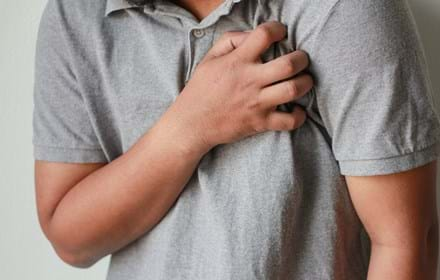
Reheating leftover pasta may improve blood sugar levels for diabetes
An experiment carried out on a recent episode of BBC TV’s Trust Me I’m A Doctor, provided surprising results in the effects on blood sugar levels in the body from eating reheated pasta, that could make a difference for people with type 1 or type 2 diabetes in managing the condition.
Presenter Dr Chris van Tulleken joined forces with Dr Denise Robertson from the University of Surrey to find out if it would be possible to improve the benefits of eating starchy foods, such as pasta, without changing a single ingredient.
When starch is cooked in water and then cooled it changes shape and this new structure is resistant to enzymes in our body and so cannot be digested. This is known as ‘resistant starch’ that passes through the body without being digested until it reaches the colon where it acts like fibre and feeds ‘good bacteria’ in the body.

A group of 10 volunteers were tested over three days eating a bowl of white pasta topped with a simple tomato sauce. On one day they ate pasta hot, when it was freshly cooked; the next day they ate pasta cold, after it had been chilled overnight; and on the third and final day of the test they ate pasta which had been chilled and then reheated.
After eating their bowl of pasta each volunteer took their own blood sample every 15 minutes for two hours. The samples were analysed to find out how much glucose they had in their blood and plotted how their blood sugar levels changed as the meal was digested.
The results showed that when the volunteers ate the hot, freshly cooked, pasta their blood glucose showed a sharp rise and fall, as expected. When the volunteers ate the chilled pasta the following day, their blood glucose did not rise as much. The cold pasta therefore did not cause the unhealthy surges in blood sugar and insulin.
On the final day the research team were surprised by the results from the volunteers who ate the reheated pasta. This had never been tried before and the results were striking: the blood glucose in these volunteers rose half as much as it did after eating even the chilled pasta – already known to have health benefits.
The findings suggested that by simply reheating pasta dishes (and probably potatoes and other starchy foods) after chilling in the fridge makes it much healthier – protecting people against sharp spikes in blood sugar, while providing all the benefits of fibre, without having to change your diet.
Dr Robertson is set to continue with her research looking at whether adding resistant starch to the diet can improve some of the blood results associated with diabetes.
Pam Dyson, Specialist Diabetes Dietitian, Oxford Centre for Diabetes, Endocrinology and Metabolism (OCDEM) and DRWF leaflet author, said: “There has been a lot of interest in resistant starch (RS) and its effects on body weight and diabetes control over the past few years.
“Resistant starch is starch that passes through the small intestine undigested and moves into the large intestine, where the action of bacteria produce short chain fatty acids (SCFA). Resistant starch is categorised as:
- RS1: Physically enclosed starch, usually found in the cell walls of grains, seeds and legumes (peas, beans and lentils)
- RS2: raw starch granules as found in potatoes before cooking and green bananas
- RS3: retrograded starch found in foods like pasta, potatoes and rice after cooking and chilling (and re-heating)
- RS4: chemically modified starch, which does not occur naturally and is created in the laboratory.
“The main area of interest is RS3, simply because these starches are readily accessible and palatable, although there is great interest in prebiotics such as inulin (found in Jerusalem artichoke) as they appear to have similar effects to RS.
“As the carbohydrate from RS passes into the large intestine largely unchanged, it acts as a foodstuff for gut bacteria and is fermented to SCFA. The products of colonic bacterial fermentation appear to favourably influence health by a variety of means.”
Among the health benefits resistant starch has been associated with are: weight management; improvements in glucose metabolism in people with and without diabetes; improvements in the metabolic syndrome; and protection against colon cancer.
Dr Dyson added: “Most studies report mild side-effects associated with diets high in RS. RS may affect laxation and cause gastrointestinal effects, including abdominal discomfort, flatulence, and diarrhoea, especially at higher or excessive intakes.”
Support DRWF by making a donation here
Find out more about DRWF-funded research here
Find out more about DRWF fundraising here
For latest update follow DRWF on Facebook, Instagram and Twitter
To receive the charity’s latest bulletins as they become available, please sign up here
Read DRWF diabetes information leaflets here
Join the Diabetes Wellness Network here
I would like to make a regular donation of
I would like to make a single donation of
There are lots of ways to raise money to support
people living with all forms of diabetes.
Bake, Swim, Cycle, Fly ... Do It For DRWF!
Fundraise with us
Recent News


